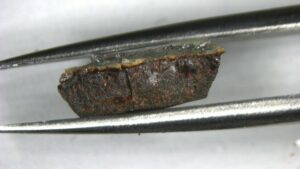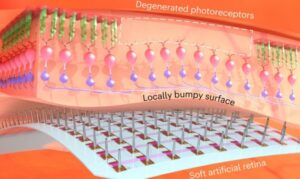A new ultrathin photovoltaic cell could be used as a power source for satellites in regions of space that experience high levels of radiation. Developed by researchers from the University of Cambridge in the UK, the device uses a thin layer of gallium arsenide (GaAs) to absorb light and is more robust to proton radiation than thicker devices studied previously.
Cosmic radiation is ionizing radiation made up of a mixture of heavy ions and cosmic rays (high-energy protons, electrons and atomic nuclei). The Earth’s magnetic field protects us from 99.9% of this radiation, and the remaining 0.1% is significantly attenuated by our atmosphere. Spacecraft receive no such protection, however, and radiation can damage or even destroy their onboard electronics.
Radiation-induced defects trap photoactivated charge carriers
In solar cells, radiation damage introduces defects into the photovoltaic materials that form the cell’s light-collecting layer. These defects trap the photoactivated charge carriers responsible for generating a flow of electric current across the material, reducing the current and ultimately lowering the power output of the cell.
The further the charged particles must travel through the solar cell, the more likely they are to encounter a defect and be trapped. Hence, reducing this travel distance means that a smaller fraction of the particles will become trapped by defects.
One way to do this is to make the solar cells thinner. In the new work, researchers led by Armin Barthel did exactly that, fabricating their cells from a stack of semiconducting materials with a GaAs light-absorbing layer just 80 nm thick.
To test whether this strategy worked, the team imitated the effects of cosmic radiation by bombarding the new cell with protons generated at the Dalton Cumbrian Nuclear Facility in the UK. They then measured the cell’s performance using a combination of time-resolved cathodoluminescence, which measures the extent of radiation damage, and a device known as a Compact Solar Simulator that determines how well the bombarded devices convert sunlight to power.
Barthel and colleagues found that the lifetimes of charge carriers in their device decreased from around 198 picoseconds (10-12 s) pre-radiation to around 6.2 picoseconds afterwards. However, the actual current remained constant up to a certain threshold of proton fluence, beyond which it dropped sharply. The researchers say this drop correlates with the point at which the carrier lifetime, calculated from cathodoluminescence, becomes comparable to the time it takes for carriers to cross the ultrathin device.
Power generation in demanding space environments
“The main potential application of the devices studied in this work is for power generation in demanding space environments,” Barthel says. In a study describing the research, which is published in Journal of Applied Physics, the researchers suggest that one such environment might be middle Earth orbits (MEOs) such as the Molniya orbit that passes through the centre of Earth’s proton radiation belt and is used for monitoring and communications at high latitudes. As better-protected low-Earth orbits (LEOs) become ever more cluttered, such orbits will become more important.

Carbon nanotubes help space-bound electronics resist radiation damage
The orbit of Jupiter’s moon Europa, which is of particular scientific interest in the search for extra-terrestrial life, is another example. This moon has one of the most severe radiation environments in the solar system and landing a solar-powered spacecraft there will require highly radiation-tolerant cells.
Although the new cells are primarily designed as a power source for satellites, Barthel tells Physics World that he “does not rule out the idea” of using them to generate power in space for use down here on Earth. He and his colleagues now plan to use what they learnt from this study to further optimize their cells. “So far, we have only looked at one thickness for our ultrathin cells and our results will help us figure out if there is a different thickness that gives a better compromise between radiation tolerance and light absorption,” Barthel explains. “We are also interested in looking at stacking multiple ultrathin cells to improve power output and also trying different material combinations.”













